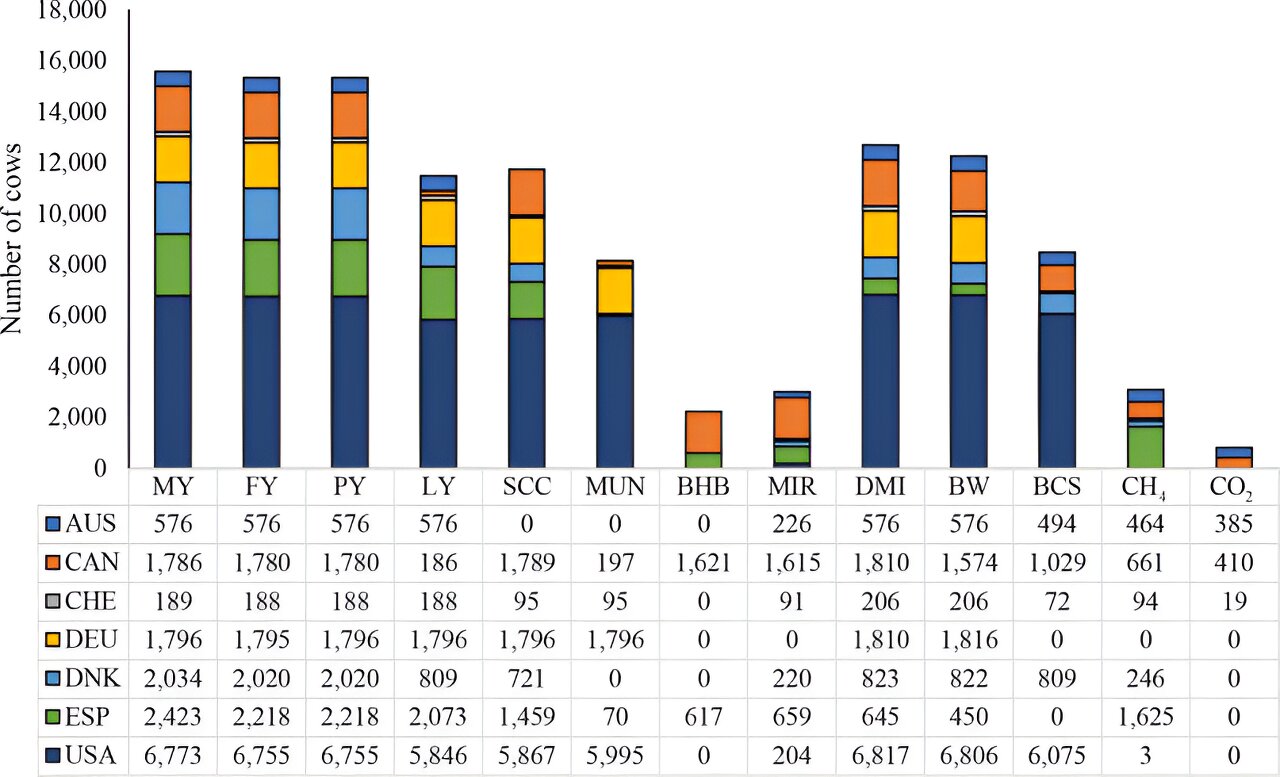In a new Journal of Dairy Science study, researchers have increased the quantity and quality of the available data on genetic traits related to feed efficiency and methane emissions
Dairy herds of the future will need to be able to adapt to changing environmental conditions, while also feeding the world efficiently and with the lowest possible emissions footprint. An international initiative, The Resilient Dairy Genome Project, is bringing together a large-scale, interdisciplinary team to develop genomic tools to help dairy farmers achieve this goal.
In the project’s key paper, the team outlines the creation of a standardized international genetic and phenotypic database and the crucial first step toward developing the genomic tools needed for tomorrow’s resilient, healthy, and productive herds.
Two main components of this resilient herd of the future are feed efficiency—or the ability of an animal to produce more milk with less feed—as well as the amount of methane produced by the cow along the way. Increasing efficiency and decreasing methane emissions can not only maximize producers’ profitability but also reduce the dairy sector’s overall environmental impact.
Selecting for these traits means having reliable data on genotypes—the gene underlying the traits—as well as phenotypes—the observable characteristics of the trait resulting from the interaction of the genotype with the cow’s environment.
The lead investigator of the study—and the leader of the project as a whole—Christine Baes, Ph.D., of the Centre for Genetic Improvement of Livestock, Department of Animal Biosciences, University of Guelph, Guelph, Ontario, Canada, explains, “Our ability to generate internationally impactful genomic tools for resilient dairy cows requires us to first to have a global grasp of genotypes and high-quality phenotypes.”
Baes and her team set out to not only gather this massive dataset but also to develop strategies for managing and standardizing the data. No small feat considering the quantity of data and the differences in how they’re recorded, measurement technology used, diversity of genotyping, management practices, and nutrition across countries.
The project’s database currently includes information from seven countries—Australia, Canada, Denmark, Germany, Spain, Switzerland, and the United States—that contribute data three times per year. The information includes pedigree, calving, production, feed efficiency, environmental emissions, genotype, and milk mid-infrared spectral files, all merged to provide a shared global database.
This initial study focused on Holstein dairy cows and the team worked to understand the various methods for data collection, including pedigree tracing and genotyping. Imputation techniques were used to ensure uniformity across all genotyped animals.
Baes explained, “As of March 2024, the database contains 1,508,751 dry matter intake records from 18,648 cows and 33,723 methane records from 4,500 cows and continues to grow as countries upload new data.”
Baes outlined, “Our analysis revealed a high level of genetic similarity among Holstein populations across different countries, suggesting significant genetic exchange, which will prove beneficial as we work toward tools for cross-country genomic prediction.”
Despite this, the team was quick to point out areas for further research.
Baes said, “There were variations in the phenotypes for feed intake and methane emissions among countries, highlighting the need for additional uniformity evaluations before further analyses.”
Overall, this international collaboration and data exchange has improved the actual progress toward the launch of feed efficiency evaluations across many project partners, while the increase in data on methane emissions has paved the way for the development of new evaluations for this important trait.
Canada launched the world’s first genomic evaluation for methane efficiency last year in the precursor Efficient Dairy Genome Project to this new body of work. Through this process, genetic solutions can contribute in the future to the selection of dairy cows that are more resource-efficient and have a lower environmental burden.
More information:
Nienke van Staaveren et al, The Resilient Dairy Genome Project—A general overview of methods and objectives related to feed efficiency and methane emissions, Journal of Dairy Science (2023). DOI: 10.3168/jds.2022-22951
Citation:
International dairy science collaboration paves the way for tomorrow’s resilient dairy herds (2024, April 25)
retrieved 25 April 2024
from https://phys.org/news/2024-04-international-dairy-science-collaboration-paves.html
This document is subject to copyright. Apart from any fair dealing for the purpose of private study or research, no
part may be reproduced without the written permission. The content is provided for information purposes only.

